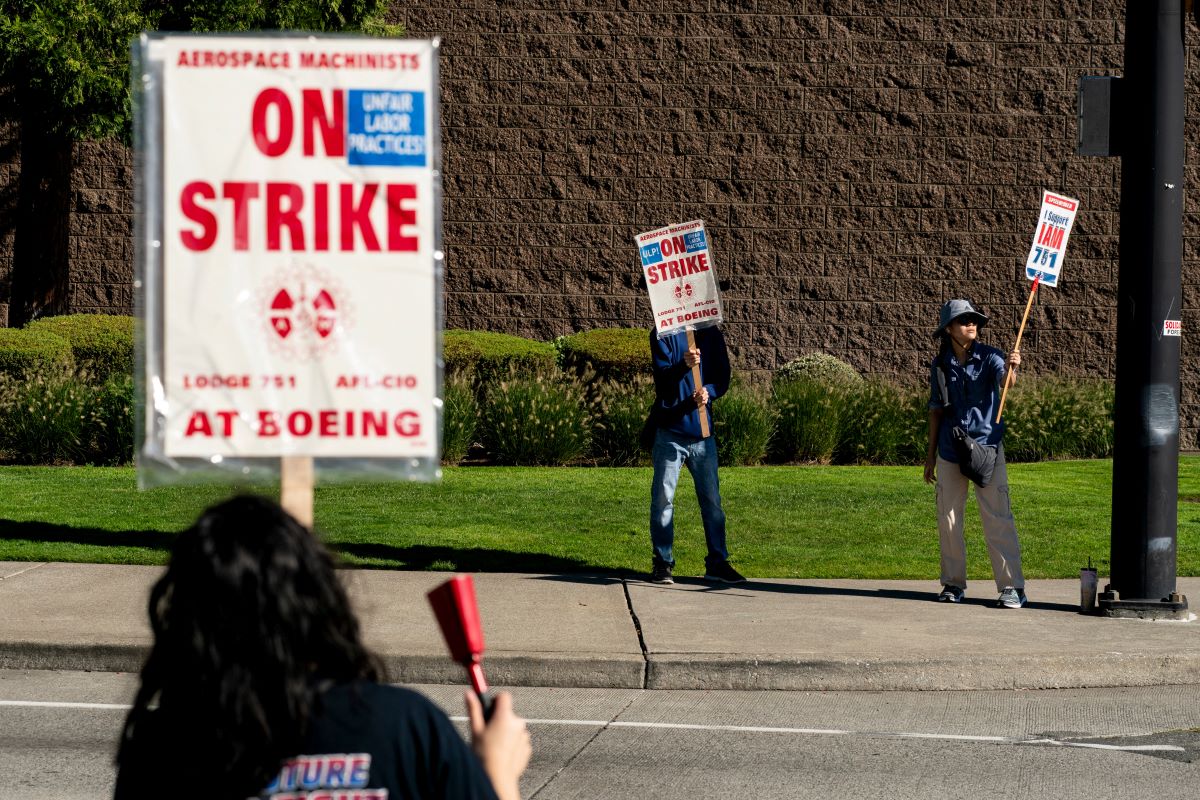Boeing Co. and the union representing 33,000 striking workers reached a tentative agreement October 19 on a new contract with help from the White House, underscoring the high stakes to end a work stoppage that has crippled one of the largest U.S. exporters.
The proposal hammered out overnight in Seattle includes a wage increase of 35% spread over four years, a guaranteed annual bonus of at least 4% and an additional $7,000 bonus if workers approve the contract, IAM District 751 said in a statement on its website October 19. A ratification vote is set for October 23.
The potential breakthrough ends a lengthy impasse marked by miscues and finger-pointing on both sides. The White House sent Acting Secretary of Labor Julie Su to Seattle to support the collective bargaining process, and she met multiple times with both the union and new Boeing chief executive officer Kelly Ortberg to overcome the stalemate.
“President Biden believes the collective bargaining process is the best way to achieve good outcomes for workers, and the ultimate decision on a contract will be for the union workers to decide,” the White House said in a statement after the two sides confirmed that they’d reached a deal.
Resolving the strike would provide a boost to Ortberg, who joined Boeing in August with a mandate to revamp operations. He is slated to address analysts and investors for the first time on October 23, when Boeing reports its third-quarter results.
A tentative deal between Boeing and the union doesn’t guarantee that workers will also fall in line. When the first proposal, which was backed by both sides, was put to a vote in September, employees overwhelmingly turned it down.
Boeing has since come back twice with sweetened bids, first with a 30% increase that it took directly to workers, and now with the latest plan that is on the table and is 10 percentage points above the initial offer.
“We look forward to our employees voting on the negotiated proposal,” Boeing said in a statement.
Pressure Mounting
Pressure is mounting for Boeing, its suppliers and striking workers, as the strike enters a sixth week. The work stoppage that began September 13 stretches along the West Coast and has forced Boeing to shut down assembly lines for its cash-cow 737 Max, 767 and 777 aircraft.
The planemaker is moving forward with plans to cut 10% of its workforce, the first step toward a broader realignment of its businesses under Ortberg. The pain has also started to ripple through Boeing’s supply chain, with Spirit AeroSystems Holdings Inc. warning it would have to lay off 700 workers building components for the 767 and 777 programs.
Boeing has taken the initial steps to raise capital it will need to shore up its operations and maintain its investment-grade credit rating. The company has lined up a $10 billion credit facility with banks, and filed a shelf registration to raise as much as $25 billion over the next three years.
The strike by IAM District 751 marks the first major labor strife at Boeing in 16 years. As hourly workers are pushing for 40% pay increases and better retirement benefits, they’re driven by resentment over receiving paltry wage increases over the past decade while senior executives were richly rewarded.
The latest agreement addresses many of the frustrations that workers expressed with the company’s earlier proposals. But it doesn’t reinstate Boeing’s defined-benefit pension plan, a potential sticking point for some members.
Instead, Boeing would raise its contributions to workers’ retirement savings plans. The company would make a one-time contribution of $5,000 into the 401(k) plans of all eligible workers, and fully match their contributions of as much as 8% of salaries.



